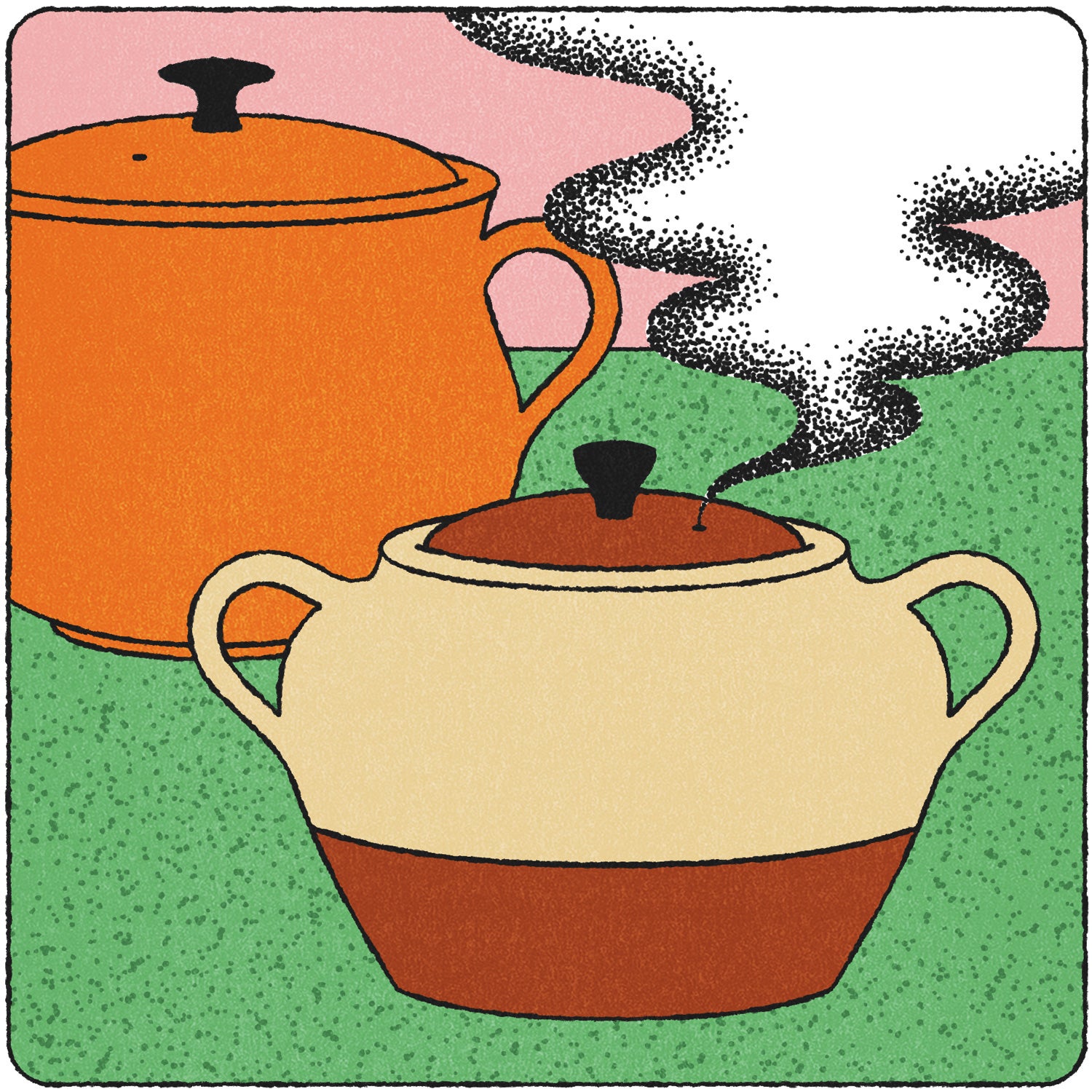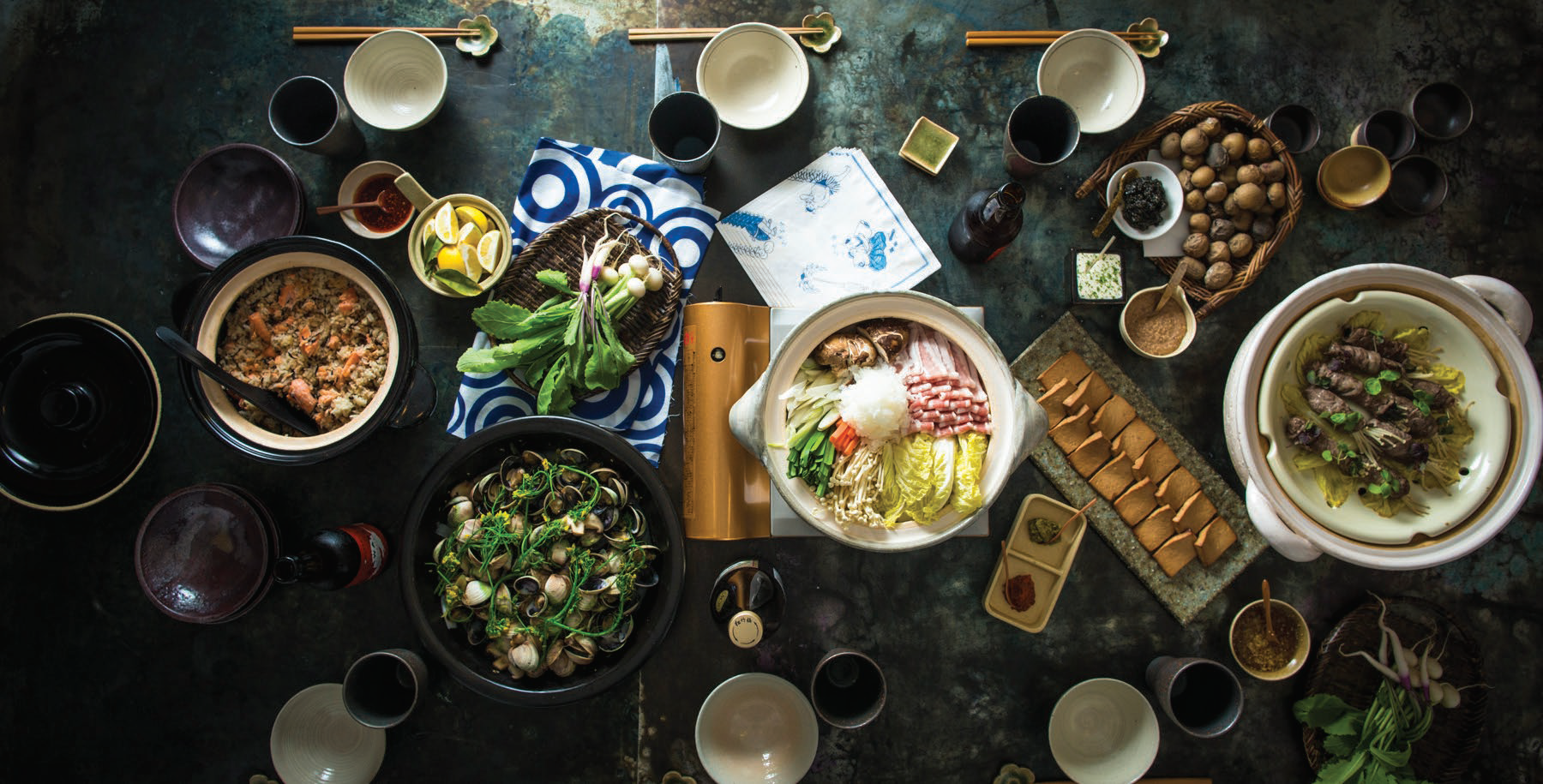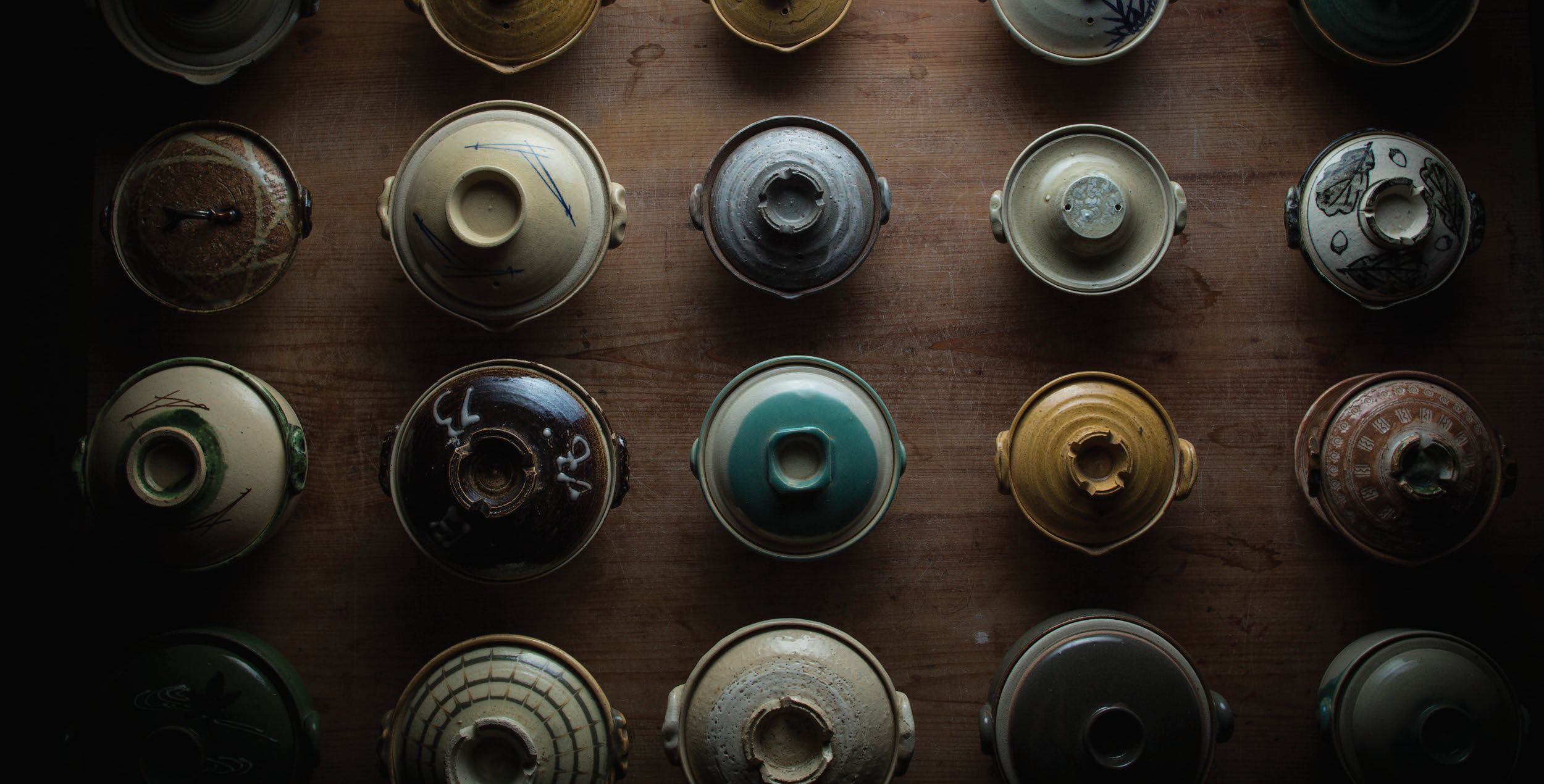
Make all your food taste better with this one prehistoric trick? Not exactly, but clay-pot cooking has got some rabid fans.
The best rice I’ve ever made came from a $10 sand pot bought at a Chinese grocery store in Queens. And I mean perfect rice: every grain cooked evenly, fluffy, and distinct with the barest hint of cling. This is more than I can say for several rice cookers I’ve owned over the years, which yielded gummy, overcooked grains as often as not, and was superior to following the Internet’s many tricks—such as boiling rice like pasta (messy and sticky) or folding a kitchen towel under the lid to absorb rising steam (nearly set my stove on fire).
The process is simple. Use a scant two cups of water for a cup of rinsed rice. Slowly bring it to a boil, then simmer on the lowest possible heat until the rice is done. The clay pot works every time. And I know how this sounds, but the rice also comes out tasting more…ricey. A rich, concentrated grain essence that hints at popcorn and toasted nuts.
For years I thought this was all in my head. Then I asked around for other cooks’ opinions on cooking with earthenware, and food writer Charlotte Druckman kvelled to me about her Chamba pot. “This is going to sound completely absurd, but it’s almost like the difference between a hot tub and a sauna for your beans,” she says of her unglazed bean pot from Colombia. “I like what the drier heat does; you really do get a better flavor with that pot.”
There are lots of reasons to love clay cookware. The artistic value of a cooking vessel that doubles as a beautiful serving dish, say, or the cultural connection to truly ancient cooking traditions. Ultimately, cooks may struggle to articulate why their favorite dishes come out better in clay, but on a quasi-mystical level, they know it’s true. “The pot has a memory,” as one cazuela collector puts it. “There’s an energy to food that cooks in clay,” says another. If you doubt a clay person’s almost spiritual devotion to their pots, just ask any of the 650 members of the Cooking With Clay Facebook group, founded by earthenware evangelist Steve Sando, where a community of cooks share new finds from their travels, leads to hunt down rare vintage pieces, and the comparative benefits of different mineral compositions.
“Paula showed me the difference between eggs cooked in a clay cazuela and a metal pan,” Carolyn Tillie, one of the group’s admins, tells me. “In metal, the whites get this crusty edge, but in clay, they come out softer, less rubbery.” The Paula she’s referring to is her friend Paula Wolfert, whose 2009 book Mediterranean Clay Pot Cooking introduced a new generation of cooks to the ancient cult of clay. The women met in a clay-pot discussion thread on the eGullet forum back in 2003 and developed a rich friendship around, among other things, earthenware. Tillie was one of the cookbook’s recipe testers, and her clay obsession has only grown over time. (“I only have 20 or 25 pieces,” she demurs.) As a way of demonstrating the clay pot’s benefits to others, she occasionally cooks the same dish in two pots at once. “Even the most untrained palates notice,” she insists. “Turkey comes out juicier in my [clay] Romertopf roaster, and compared to a stew cooked in clay, a batch made in a conventional pot is just flat and one-dimensional. The flavors don’t meld the same way.”
Here’s what I can tell you about the empirical benefits of cooking with earthenware. Clay brings food to a boil more slowly than cast iron, but also more evenly, so the food takes heat from all directions: the sides and lid as well as the bottom. Clay heats up without the hot spots you get with cast iron or steel that lead to scorching. And it maintains that heat for a long time, keeping your food warm well after it leaves the stove. You couldn’t ask for a better tool to braise, slow-roast, bake bread, or cook grains.
And then there’s the quasi-mystical stuff, the alchemical attributes of porous, unglazed, or partially glazed earthenware. No one’s sure exactly how it works, but food cooked in clay takes on a softer, rounder quality—and depending on the pot’s mineral composition (which can include mica, phosphorus, and potassium), subtle earthy and smoky flavors and aromas as well. Beans come out more flavorful and savory; stews emerge richer and a little sweeter, as the clay’s natural alkalinity tones down acidic ingredients. At some point, you stop wondering how and just embrace the mysteries—less watery sauce; juicier meat; grains and beans that taste more like themselves.
Cooking with clay does come at a cost. As with cast iron, it can be tricky to scrub away stuck-on food at first, though as the pot develops a patina with use, this problem disappears. Earthenware isn’t built for high-heat searing, and abrupt temperature changes can crack it. Some manufacturers recommend starting your pot in a cold oven or on low heat, then gradually the increasing temperature, which could add an extra 10 minutes to the total cooking time of your dish. And many unglazed pots need to be “seasoned” before first use. (Everyone has their own method, but it basically means soaking the pot, then filling it three quarters of the way with water and slowly bringing it to a boil.)
Then there’s the big one: With its relative fragility, clay is an accident waiting to happen.
“Something’s going to happen to it, and you have to get past that,” says Sando, the founder of the heirloom bean company Rancho Gordo. Which means, hey, there’s no reason not to hoard. “Who needs one tagine, let alone four? But they break easily, so it’s totally valid for me.” I ask how many pots Sando owns at this point. He laughs. “Hundreds.”
Many of those pieces are bean pots; others are way more specialized. He likes the particular interaction between one of his pots and the Mexican hominy soup pozole, so that’s all he cooks in it. Another pot is just for a Turkish chard and chickpea stew. One potter’s work, he swears, lends a caramel flavor to food.
“Sometimes I’ll buy a pot just because I want to try a specific recipe,” says Calista DeJesus, another Cooking With Clay member and, at 33, one of the younger ones. She fell down the rabbit hole after a hot pot meal at a Japanese friend’s home, cooked on the table in an earthen donabe—and considers cooking in a pot designed for a particular dish to be an extension of learning what that dish is all about. “There’s dishes I’ve learned to make just because of the pots.” DeJesus has packed 18 pieces into her two-room Brooklyn apartment, and she jokes that her husband has threatened to divorce her if she picks up another one. Yet next month they’re leaving on a trip to Japan that includes a stop in Iga, a city in Mie Prefecture renowned for its handmade donabes, including the work of one family that’s been making the pots for eight generations.
If you want to get into clay cooking yourself, Amazon reviews and algorithms aren’t going to help you. (On the other hand, Wolfert’s still-current guide to clay pots and sources sure will.) Like the very act of cooking, clay is demanding and idiosyncratic and deeply personal. I’ve come to think of it as an antidote to all the ways we talk about food now: the best recipes, the perfect tools, the ultimate way to make something we’ve been making for hundreds of years. The thirst for objective optimality has grown exhausting. The more I cook, the less I’m interested in the best way to make something. All I need is the way that’s best for me.
Does a clay pot make food taste better? Yes, but not in the way you might think. You get a clay pot because you want one, and you cook in it because you want to attenuate yourself to the intricacies of the food inside. You pause to consider which of your pots is best suited for a dish. You heat it slowly. You pay attention along the way.
It’s not that the pot makes better food; it’s that it makes you a better cook.
Donabe photos by Eric Wolfinger from Donabe: Classic and Modern Clay Pot Cooking


